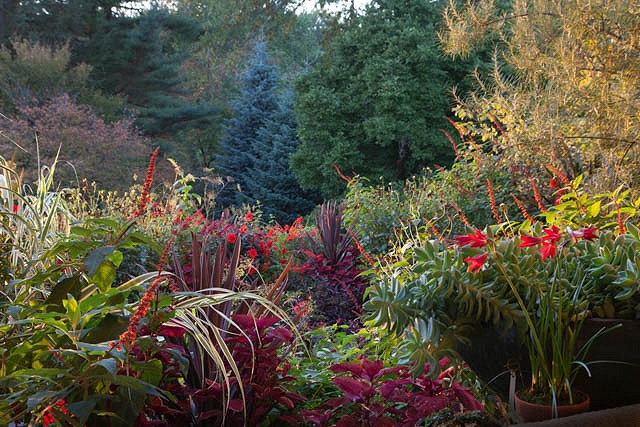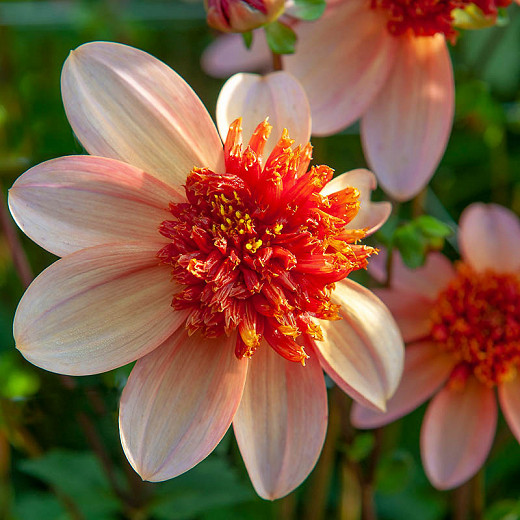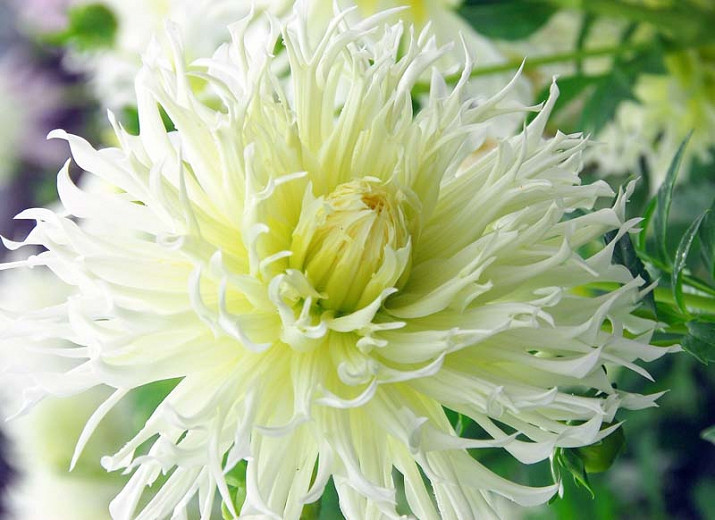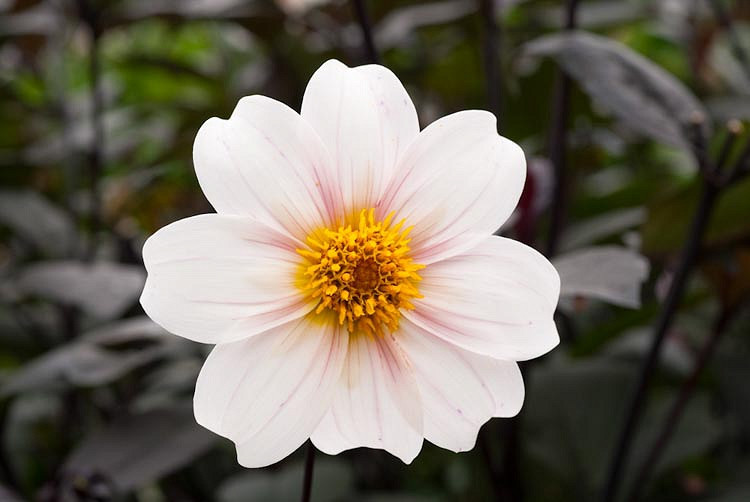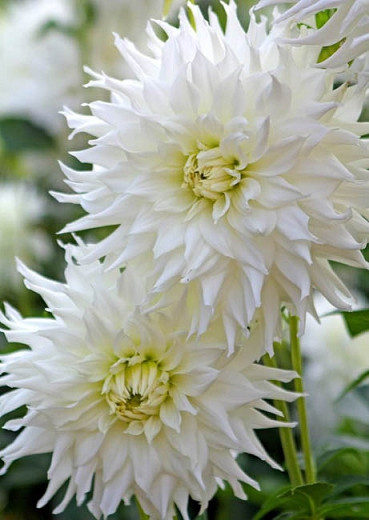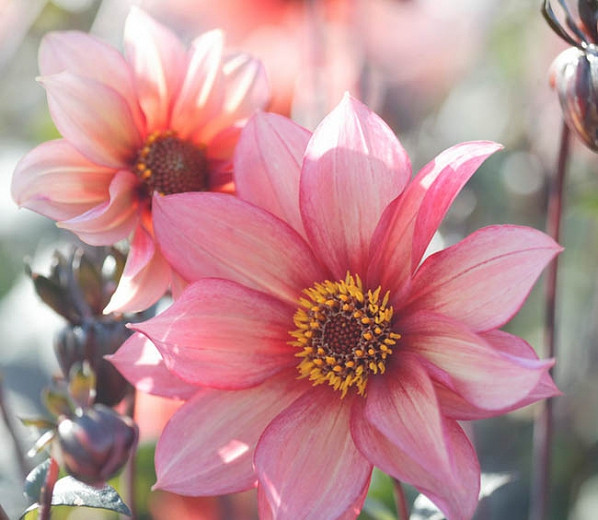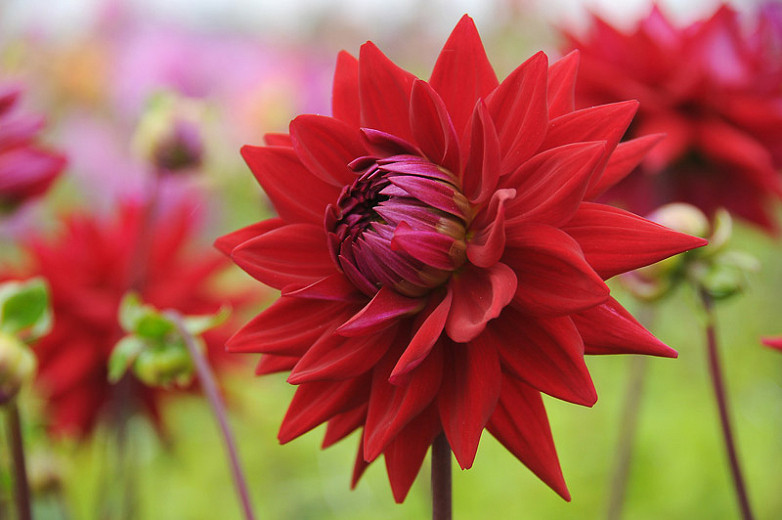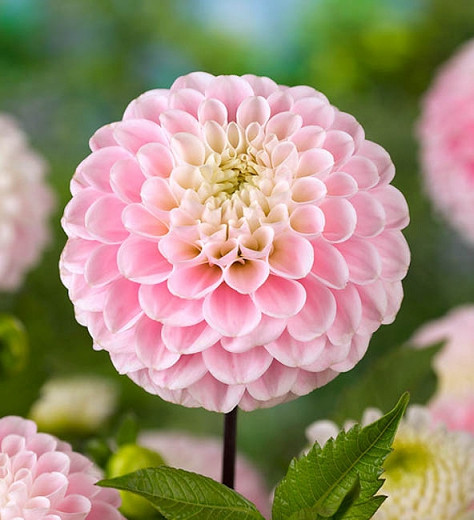Dahlia Bishop of Llandaff
Truly an amazing sight! The stunning contrast of its brilliant, scarlet flowers atop its dark eggplant-colored, almost black, foliage is simply irresistible.
One of the most popular dark-leaved dahlias. The stunning contrast of its brilliant, scarlet flowers atop its dark eggplant-colored, almost black, foliage is simply irresistible. The semi-double flowers, up to 4 in. wide (10 cm) blend in nicely with other plants and add welcomed color and form to the late summer and fall borders. They are not top-heavy because they contain little water. They stand up nice and straight even when it rains.
- Blooming massively from July until Frost, this dahlia grows up to 36 inches (90 cm) and is an excellent choice to create a lovely garden display or for showing.
- Winner of multiple awards (over 183 according to the American Dahlia Society!) including the prestigious Award of Garden Merit of the Royal Horticultural Society.
- A great pick for borders or as cut flowers thanks to its superb vase life. Did you know that the more you cut Dahlia flowers, the more flowers you get? This makes Dahlias twice as nice: pretty in a vase, pretty in the garden. A great big flower in a vase or floating in a shallow bowl makes the perfect eye-catcher.
- Best flowering occurs in full sun, but light shade will be welcomed in hot summer areas.
- Provide consistent moisture during the growing season and do not allow soils dry out. Plant in a sheltered location to protect your dahlias from strong winds.
- Best in groups of 5 for best visual effect. Deadhead spent flowers to promote growth of additional flower buds.
- Toxic to dogs, toxic to cats, toxic to horses.
- If you live in a cool area (hardiness zones 3-7) and you want to save your dahlia bulbs, or more precisely, your dahlia tubers for next spring, you may dig them up before the first frost and store them over winter before replanting them next spring. Store them in boxes, covered with moistened sand in a cool, dark, frost-free place where temperature remains between 45-50 °F (7-10°C).
- This Dahlia is a member of the Peony-Flowered Dahlias which feature open centered flowers with two or more rows of petals surrounding a disc. For many years the most popular Peony-flowered Dahlia was the cultivar Dahlia ‘Bishop of Llandaff’, an heirloom variety that dates back to 1927. It has given rise to several equally gorgeous varieties like 'Bishop of Oxford' (light orange), 'Bishop of Canterbury' (purple), 'Bishop of Auckland' (deep red) or 'Bishop of York' (yellow). These dark-leaved Dahlias make real eye-catchers!
Requirements
| Hardiness | 8 – 11 |
|---|---|
| Heat Zones | 1 – 11 |
| Climate Zones | 1, 2, 3, 4, 5, 6, 7, 8, 9, 10, 11, 12, 13, 14, 15, 16, 17, 18, 19, 20, 21, 22, 23, 24 |
| Plant Type | Bulbs, Perennials |
| Plant Family | Dahlia |
| Exposure | Full Sun, Partial Sun |
| Season of Interest | Summer (Mid,Late)Fall |
| Height | 2' – 3' (60cm – 90cm) |
| Spread | 1' – 2' (30cm – 60cm) |
| Spacing | 18″ – 24″ (45cm – 60cm) |
| Water Needs | Average |
| Maintenance | Average |
| Soil Type | Clay, Loam, Sand |
| Soil pH | Acid, Alkaline, Neutral |
| Soil Drainage | Moist but Well-Drained |
| Characteristics | Cut Flowers, Plant of Merit, Showy |
| Attracts | Butterflies |
| Garden Uses | Beds and Borders |
| Garden Styles | City and Courtyard, Cutting Garden, Informal and Cottage |

